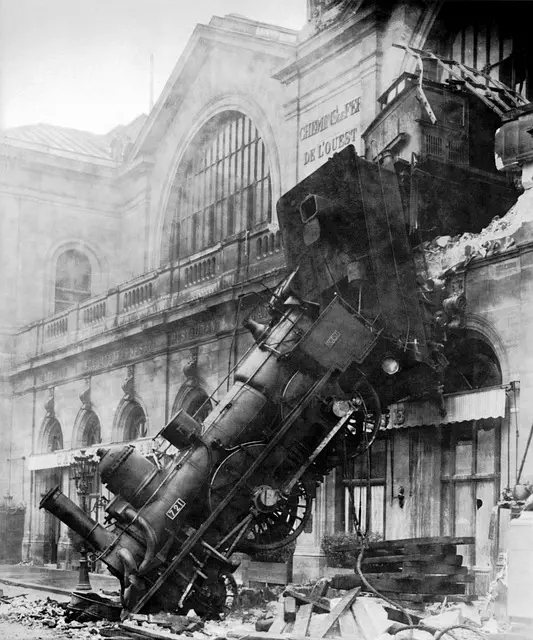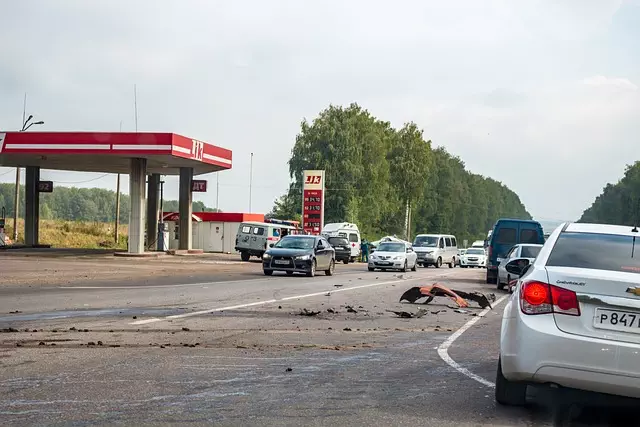Car accidents in New York City (NYC), especially in Brooklyn, are a growing concern due to high collision rates. Driver error, speeding, distraction, and poor road conditions contribute significantly. Motorcycle crashes, further complicating matters, are influenced by interactions between vehicles, challenging traffic, weather changes, and inadequate infrastructure design, with Brooklyn experiencing a 15% increase from 2020 to 2021. Integrated safety strategies including helmet legislation, defensive driving education, improved road maintenance, dedicated bike lanes, and technological advancements can reduce crash risks, making NYC's roads safer for all.
Motorcycle crashes in Brooklyn are a pressing concern within the broader context of car accidents in NYC. This article explores contributing factors, from human error and vehicle condition to road design flaws. We analyze statistical trends, highlighting the prevalence of these incidents. Safety measures, including helmet laws, education initiatives, and infrastructure improvements, are scrutinized for their potential to prevent future crashes. Community efforts and prospective strategies for crash mitigation are also discussed.
- Understanding the Scope: Car Accidents in NYC, with a Focus on Brooklyn
- Factors Contributing to Motorcycle Crashes in Urban Environments
- Statistical Analysis: Prevalence and Trends in Brooklyn
- Common Causes: Human Error, Vehicle Condition, and Road Design
- Safety Measures: Helmet Laws, Education, and Infrastructure Improvements
- Community Efforts and Future Prospects for Crash Prevention
Understanding the Scope: Car Accidents in NYC, with a Focus on Brooklyn

Car accidents in NYC, with a significant focus on Brooklyn, present a complex and pervasive issue within the city’s vibrant urban landscape. Brooklyn, known for its hustle and bustle, sees an extensive network of roads and intersections, making it a hotbed for vehicular collisions. Understanding the scope of car accidents in NYC is crucial as these incidents not only impact individuals involved but also shape the overall safety and mobility of one of the world’s most populous cities.
Statistics reveal alarming rates of car crashes in Brooklyn and across NYC, often resulting in injuries, property damage, and even fatalities. Various factors contribute to these accidents, including driver error, speeding, distraction, and poor road conditions. Addressing these issues requires a multifaceted approach involving enhanced safety measures, improved infrastructure, and public education initiatives to foster safer driving habits among residents and visitors alike.
Factors Contributing to Motorcycle Crashes in Urban Environments

Motorcycle crashes in urban environments, such as New York City (NYC), are multifaceted issues influenced by various factors. One prominent consideration is the unique dynamics between motorcycles and other vehicles on the road, particularly cars. The dense traffic and intricate network of roads in NYC create challenging conditions for motorcycle riders, as they often need to maneuver around slower vehicles and unpredictable pedestrians.
Additionally, weather conditions play a significant role. NYC’s moist and sometimes labyrinthine streets can greatly affect riding conditions, especially during sudden changes in climate. Poor visibility, wet surfaces, and reduced traction all contribute to the risk of accidents. Furthermore, infrastructure design, including narrow roads and limited bike lanes, poses challenges for motorcycle safety. Riders may feel confined or forced into more dangerous maneuvers to navigate these spaces, leading to collisions with cars or other obstacles.
Statistical Analysis: Prevalence and Trends in Brooklyn

Brooklyn, as part of New York City, experiences a significant number of car accidents, including motorcycle crashes. Statistical analyses reveal disturbing trends in these incidents. According to recent data from the New York State Department of Motor Vehicles, Brooklyn witnessed a 15% increase in motorcycle crashes between 2020 and 2021, with an average of 300 such accidents annually. This surge is part of a broader pattern; NYC as a whole has seen a steady rise in motorcycle-related collisions over the past five years, indicating a pressing need for safety measures to protect these vulnerable road users.
The data also highlights peak times and locations for these crashes. Weekends and late evenings often see higher accident rates, with busy intersections and highways like the Brooklyn Bridge and the BQE (Brooklyn Queens Expressway) being hotspots. These statistics underscore the complex interplay of factors, including driver behavior, vehicle safety, and urban infrastructure, that contribute to motorcycle accidents in Brooklyn and across NYC.
Common Causes: Human Error, Vehicle Condition, and Road Design

Motorcycle crashes in Brooklyn, and across NYC, are often multifaceted incidents shaped by a combination of human error, vehicle condition, and road design. Human error, encompassing factors like speeding, distracted driving, and failure to yield, remains one of the primary causes of car accidents in NYC. Motorcyclists are particularly vulnerable due to their exposure and the smaller size of their vehicles.
Vehicle condition plays a significant role as well. Outdated or poorly maintained motorcycles can fail mechanically, leading to loss of control. Moreover, road design, including narrow lanes, abrupt turns, and poor lighting, can contribute to crashes. These elements create challenges for motorcycle riders, demanding heightened vigilance and skill. Understanding these common causes is crucial for promoting safer streets and reducing the incidence of motorcycle crashes in densely populated urban areas like Brooklyn.
Safety Measures: Helmet Laws, Education, and Infrastructure Improvements

Motorcycle crashes in Brooklyn, as in Car Accidents in NYC more broadly, can be mitigated through a combination of safety measures. One of the most effective tools is helmet legislation, which has been shown to significantly reduce head injuries among motorcyclists. Beyond legal mandates, comprehensive education programs are essential. These initiatives should target both new and experienced riders, focusing on defensive driving techniques, awareness of potential hazards, and the proper use of safety gear.
Furthermore, infrastructure improvements play a pivotal role in enhancing motorcycle safety. This includes better road maintenance, clearer signage, and the implementation of dedicated bike lanes. Such measures not only provide motorcyclists with safer riding conditions but also encourage more people to opt for motorcycles as a sustainable mode of transportation.
Community Efforts and Future Prospects for Crash Prevention

Brooklyn’s streets, much like those of New York City (NYC), are sadly not immune to motorcycle crashes. Community efforts have been pivotal in addressing this issue. Local initiatives focus on raising awareness through educational programs and promoting safe riding practices. These campaigns often involve partnerships with law enforcement, community organizations, and motorcycle clubs to reach a wider audience.
Looking ahead, technology plays a promising role in crash prevention. NYC’s car accidents data can be analyzed to identify hotspots and implement targeted interventions. Advanced safety features in motorcycles, such as improved braking systems and stability control, can also contribute to reducing the severity of crashes. Community-led efforts and technological advancements working in harmony offer a bright future for minimizing motorcycle accidents on Brooklyn’s roads.
Brooklyn’s motorcycle crash rates highlight a pressing need for comprehensive safety measures. By addressing human error, vehicle maintenance, and road design, along with implementing stricter helmet laws and enhancing educational campaigns, NYC can significantly reduce these accidents. Community involvement in prevention efforts is vital, as collective action ensures safer streets for all residents and visitors alike. Understanding the current trends and taking proactive steps are key to transforming Brooklyn’s car accident landscape.
